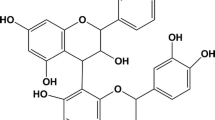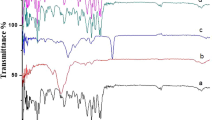Abstract
In this work, we have designed and investigated a new carrier for dermal and transdermal drug delivery. The delivery system is composed of high (>60 %) ethanol concentration, phospholipid, polymer, and water. The system forms a structured matrix following non-occluded application on the skin. We call these structured carriers as pouch drug delivery systems (PDDS). The pouch-structured matrix was characterized by electron microscopy, 31P-NMR and FTIR. The new delivery system exhibits a number of properties adequate for the design of improved dermal and transdermal drug administration for various treatments. Lidocaine PDDS dry faster and has an enhanced dermal drug delivery when compared to a clinical-used product. These proprieties are important for the prevention of premature ejaculation. Results obtained in pharmacodynamics test carried out with brotizolam PDDS in a mice-sleeping model and with ibuprofen PDDS in fevered rats indicated a prolonged hypnotic and antipyretic effect, respectively. The carrier was found nonirritant in tests carried out on EpiDermTM skin model.















Similar content being viewed by others
References
Touitou E, Dayan N, Bergelson L, Godin B, Eliaz M. Ethosomes—Novel vesicular carriers for enhanced delivery: Characterization and skin penetration properties. J Control Release. 2000;65:403–18.
Touitou E, Godin B, Weiss C. Enhanced delivery of drugs into and across the skin by ethosomal carriers. Drug Dev Res. 2000;50:406–15.
Godin B, Touitou E. Ethosomes: New prospects in transdermal delivery. Crit Rev Ther Drug Carrier Syst. 2003;20:63–102.
Ainbinder D, Touitou E. Testosterone ethosomes for enhanced transdermal delivery. Drug Deliv. 2005;12:297–303.
Godin B, Touitou E. Mechanism of bacitracin permeation enhancement through the skin and cellular membranes from an ethosomal carrier. J Control Release. 2004;94:365–79.
Dayan N, Touitou E. Carriers for skin delivery of trihexyphenidyl HCl: Ethosomes vs. liposomes. Biomaterials. 2000;21:1879–85.
Paolino D, Lucania G, Mardente D, Alhaique F, Fresta M. Ethosomes for skin delivery of ammonium glycyrrhizinate: In vitro percutaneous permeation through human skin and in vivo anti-inflammatory activity on human volunteers. J Control Release. 2005;106:99–110.
Paolino D, Celia C, Trapasso E, Cilurzo F, Fresta M. Paclitaxel-loaded ethosomes®: potential treatment of squamous cell carcinoma, a malignant transformation of actinic keratoses. Eur J Pharm Biopharm. 2012;81:102–12.
Esposito E, Menegatti E, Cortesi R. Ethosomes and liposomes as topical vehicles for azelaic acid: a preformulation study. J Cosmet Sci. 2004;55:253–64.
Ainbinder D, Touitou E. A new approach for skin tumor treatment: from delivery system characterization to in-vivo evaluation. Drug Deliv Transl Res. 2011;1:53–65.
Shumilov M, Touitou E. Buspirone transdermal administration for menopausal syndromes, in vitro and in animal model studies. Int J Pharam. 2010;387:26–33.
Nishie K, Norred WP, Pensabene JW. Effect of short-term administration of N-nitroso compounds on liver histology and on pentobarbital-induced sleeping time in mice. Res Commun Chem Pathol Pharmacol. 1974;8:301–11.
Lee CI, Han JY, Hong JT, Oh KW. 3,4,5-trimethoxycinnamic acid (TMCA), one of the constituents of polygalae radix enhances pentobarbital-induced sleeping behaviors via GABAAergic systems in mice. Arch Pharm Res. 2013;36:1244–51.
Loux JJ, Depalma PD, Yankell SL. Antipyretic testing of aspirin in rats. Toxicol Appl Pharmacol. 1972;22:672–5.
Ashafa AO, Yakubu MT, Grierson DS, Afolayan AJ. Evaluation of aqueous extract of Felicia muricata leaves for anti-inflammatory, antinociceptive, and antipyretic activities. Pharm Biol. 2010;48:994–1001.
Laub PB, Gallo JM. NCOMP-a windows-based computer program for noncompartmental analysis of pharmacokinetic data. J Pharm Sci. 1996;85:393–5.
Monteiro-Riviere NA, Inman AO, Snider TH, Blank JA, Hobson DW. Comparison of an in vitro skin model to normal human skin for dermatological research. Microsc Res Tech. 1997;37:172–9.
Kandárová H, Hayden P, Klausner M, Kubilus J, Sheasgreen J. An in vitro skin irritation test (SIT) using the EpiDerm reconstructed human epidermal (RHE) model. J Vis Exp. 2009;13:e1366.
Nzai JM, Proctor A. Soy lecithin phospholipid determination by Fourier Transform Infrared Spectroscopy and the acid digest/arseno-molybdate method: a comparative study. J Am Oil Chem Soc. 1999;76:61–6.
Spielmann H, Hoffmann S, Liebsch M, Botham P, Fentem JH, Eskes C, et al. The ECVAM international validation study on in vitro tests for acute skin irritation: Report on the validity of the EPISKIN and EpiDerm assays and on the Skin Integrity Function Test. Altern Lab Anim. 2007;35:559–601.
Hashizaki K, Taguchi H, Tsuchiya K, Sakai H, Abe M, Saito Y, et al. Calorimetry and cryo-transmission electron microscopic studies of PEG2000-grafted liposomes. Chem Pharm Bull. 2006;54:561–3.
Berner B, Liu P. Alcohols. In: Smith EW, Maibach HI, editors. Percutaneous penetration enhancers. Boca Raton, FL: CRC Press; 1995. p. 44–60.
Williams AC, Barry BW. Penetration enhancers. Adv Drug Deliv Rev. 2004;56:603–18.
Conflicts of interest
None.
Author information
Authors and Affiliations
Corresponding author
Additional information
All institutional and national guidelines for the care and use of laboratory animals were followed.
Rights and permissions
About this article
Cite this article
Zailer, J., Touitou, E. Pouch drug delivery systems for dermal and transdermal administration. Drug Deliv. and Transl. Res. 4, 416–428 (2014). https://doi.org/10.1007/s13346-014-0204-0
Published:
Issue Date:
DOI: https://doi.org/10.1007/s13346-014-0204-0




